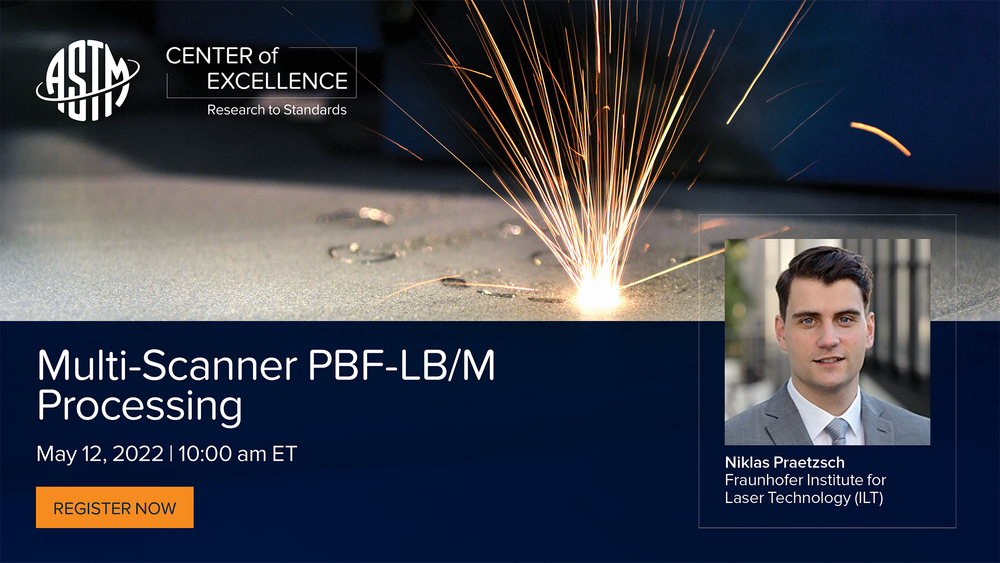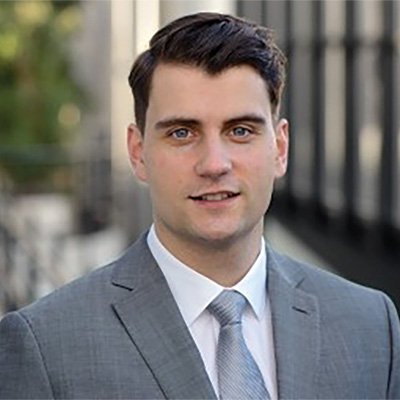About the Webinar
The webinar addresses the benefits and challenges of using multi-scanner PBF-LB/M systems on a laboratory scale and guidance on transferring the results to commercial multi-scanner PBF-LB/M machines. Depending on the arrangement of the scanners, parallel processing results in a number of constraints that must be taken into account when using multi-scanner PBF-LB/M machines. These include in particular:
-
Scanfield calibration and alignment: Highly accurate calibration of each individual scanfield and alignment of the scanfields to each other is required for precise processing with multiple laser beams. For this purpose, methods of different complexity and accuracy are presented, which allow the user to check (and correct) the calibration of its multi-scanner PBF-LB/M machine.
-
Strategies for manufacturing within the overlap area of multiple scanfields: During multi-scanner processing a decision about the stitching zone between areas processed with laser A and areas processed with laser B has to be made in every layer. During the webinar, different strategies for processing in the overlap area will be presented, as well as methods for quantifying the achievable part quality in these areas.
-
Strategies to avoid interaction between process by-products and laser radiation in multi-scanner PBF-LB/M systems: Depending on the location of parallel processing zones relative to each other, undesired interaction between laser radiation and process by-products may occur. Different strategies to reduce the probability of said interaction as well as methods to visualize the process by-product propagation are presented.
-
Planning workload when using multiple scanners: The full potential for increasing productivity through multiple laser beams is only utilized if the workload of each layer is distributed as evenly as possible to all scanners. For this reason, considerations towards workload planning in multi-scanner PBF-LB/M machines are presented.
Registration Fee: $49.00 USD
Learning Outcomes
After completing this webinar the attendees will have developed an understanding of:
- Key benefits and challenges of using multi-scanner PBF-LB/M systems
- Methods to check and improve the scanfield alignment and -calibration of multi-scanner PBF-LB/M machines
- Challenges of parallel processing with multiple laser beams and strategies to overcome them (focusing on scanfield overlap area and laser – process by-product interaction)
- Methods for build-time calculation and workload planning of multiple scanners
Manufacturing Engineers, Research Engineers, AM Process Engineers, AM Operators
Instructor
-
Instructor
Niklas Praetzsch, M.Sc. (m)
Show MoreNiklas Praetzsch, M.Sc. (m) is R&D Project Manager for PBF-LB/M Process & Systems Engineering at Fraunhofer ILT. He holds a master’s degree in Aerospace Engineering from RWTH Aachen University as well as 4 years‘ experience in Additive Manufacturing. Niklas is leading several research projects towards the development and improvement of PBF-LB/M processes and machines for a range of industrial sectors including turbomachinery, automotive and aerospace. Niklas was responsible for the first-time demonstration of the manufacturing of large scale AM components (Diameter > 600 mm) via a novel mulit-scanner PBF-LB/M approach at Fraunhofer ILT. He coordinated the development of a Virtual Lab within the Fraunhofer lighthouse project futureAM. Niklas is member of the ASTM Committee F42 on Additive Manufacturing and involved in the sub-committee F42.01 (Test Methods) an F42.08 (Data). He is project leader for ASTM AM CoE project 2009 on condition-defined maintenance and calibration cycles for PBF-LB optical systems (work item WK78092). During his 1 ½ years of work at Lufthansa Technik Ltd. he gained insight into standardization and certification processes in aviation industry.



